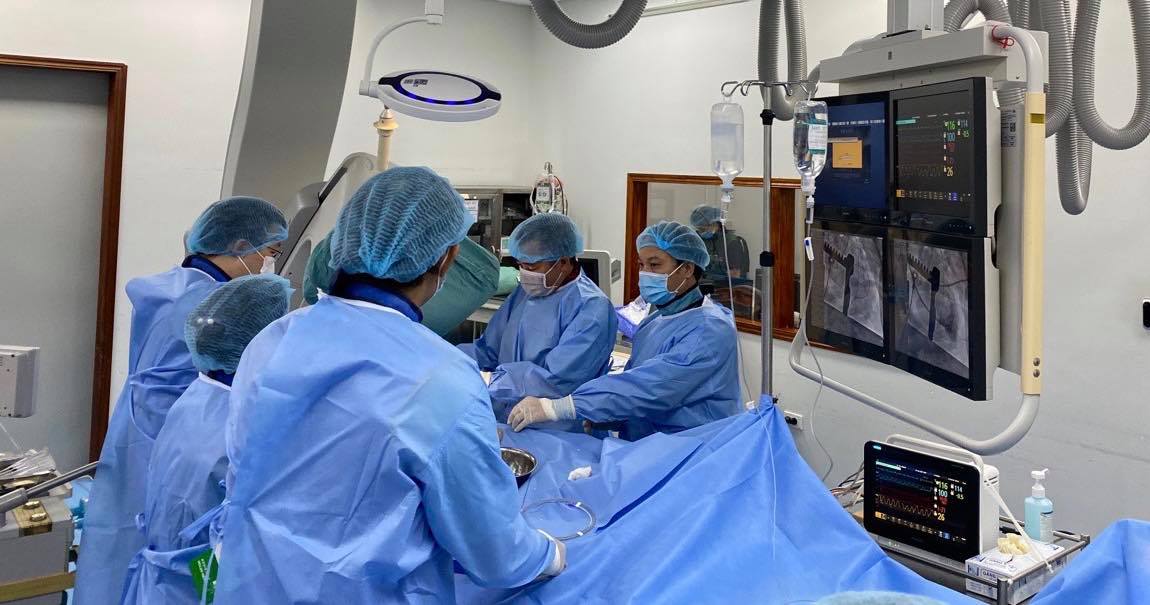
The team of doctors performing surgery for the patient. Photo: Provided by the Hospital
The patient undergoing surgery was Le Khanh T., 8 months old, whose weight is 4.5 kg (Phong Dien, Thua Thien Hue), having complicated congenital heart defect. The baby was hospitalized on June 3, diagnosed with severe ventricular septal defect of about 11mm in size, pulmonary artery pressure was nearly equal to systemic pressure and severe pulmonary hypertension in combination with malnutrition and lung infection.
The patient is treated for underlying diseases, improving his physical condition, but excessive amount of blood flowing through the ventricular septal defect caused heart failure and increasing the risk of irreversible lung damage, leading to Eisenmenger disease, a severe complication.
Due to the unique and complex location of the defect, and the very large hole of the septum, it was not feasible to perform closure interventions through vessels of the legs. In addition, the location of the ventricular opening was very close to the apex of the heart, making it difficult for the thoracic surgeons to access the hole when stitching.
With the co-direction of Assoc. Prof. Nguyen Lan Hieu, Prof. Dr. Pham Nhu Hiep, Director of Hue Central Hospital, agreed on a combination plan to perform both intervention closing the hole and open-heart surgery. After 2 hours of intervention, the hole at the ventricular septum was successfully occluded and the chest wall were safely closed. Currently, the patient continues to be monitored, as the hemodynamic parameter is stable.
“Hybird surgery was used the first time in the treatment for this patient in Vietnam, due to the very large ventricular opening, as it can only be done through the intravenous route (other hospitals usually use arteries) and it has been rarely done worldwide because of the complexity of this technique,” Assoc. Prof. Nguyen Lan Hieu, the leading expert on congenital heart intervention, emphasized.
By Dong Van